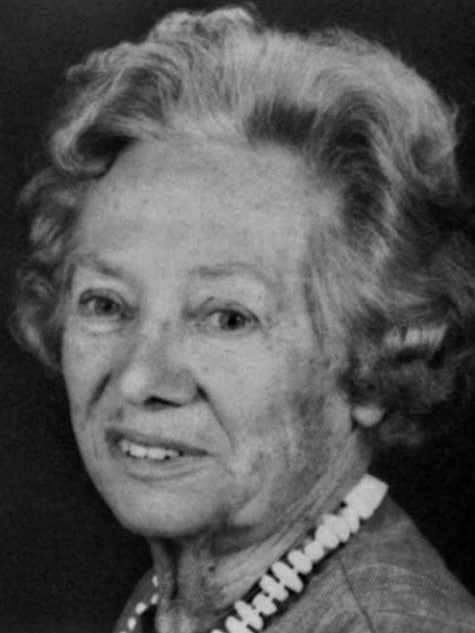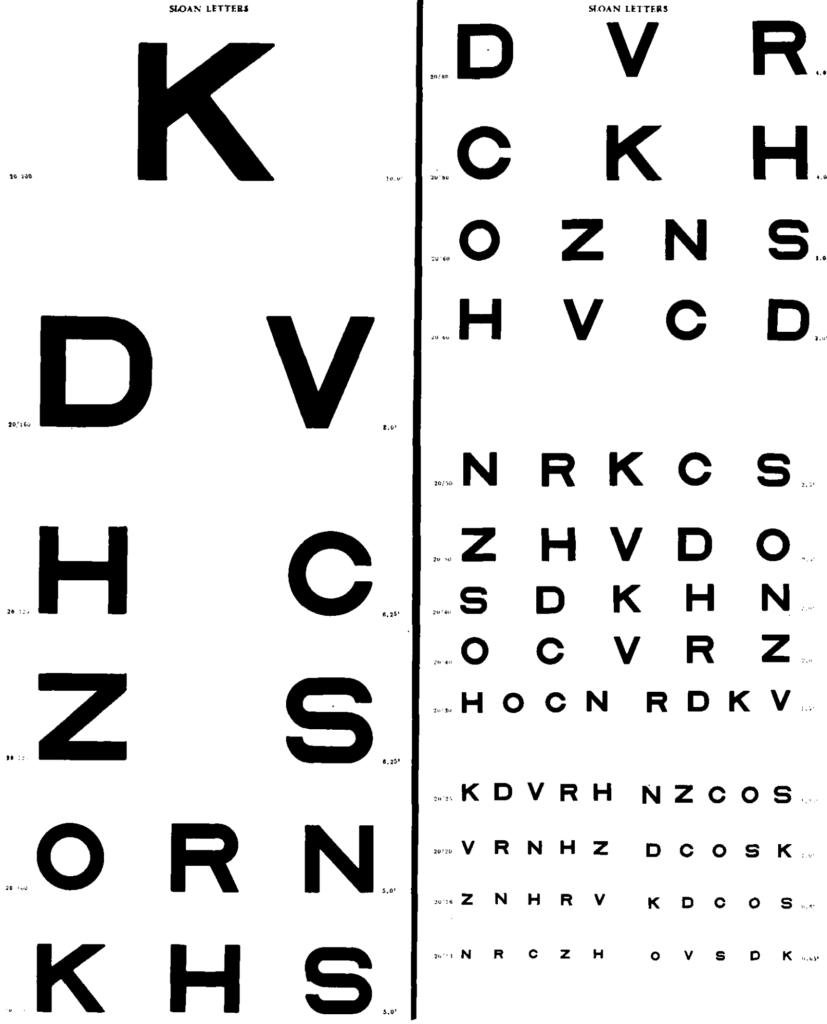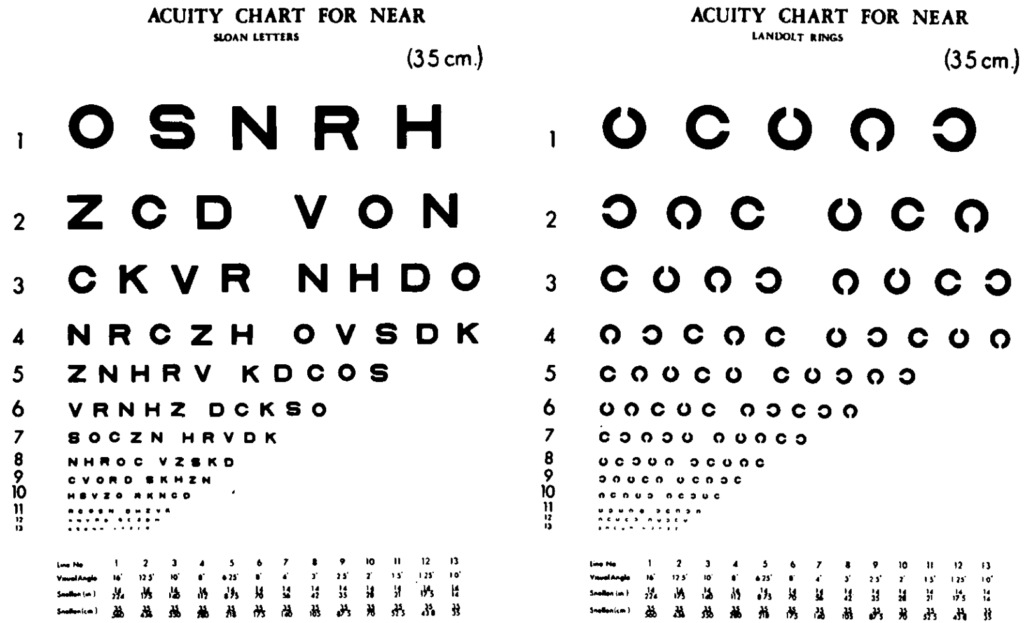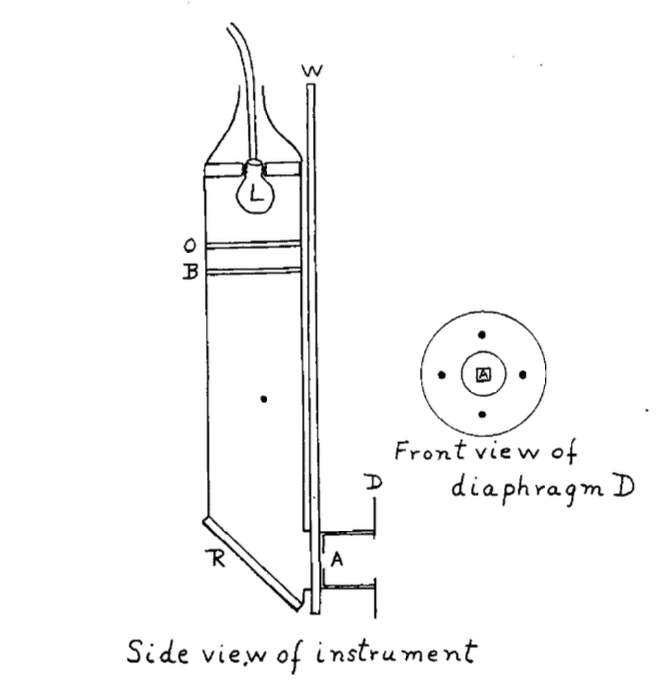Louise Sloan

Louise Littig Sloan (1898-1982) was an American ophthalmologist
Sloan was a pioneering ophthalmologist and clinical vision scientist whose career helped define the field of psychophysical vision testing. Best known for developing the Sloan letters, now central to the ETDRS and LogMAR acuity charts, Sloan also innovated in colour vision testing, static perimetry, and low vision rehabilitation.
Born in Baltimore in 1898, she studied mathematics and psychology at Bryn Mawr College before earning her PhD in experimental psychology in 1926 under Clarence Ferree and Gertrude Rand. After early research positions at Bryn Mawr and Harvard, she joined the Wilmer Eye Institute at Johns Hopkins in 1929, directing its Laboratory of Physiological Optics for over four decades.
During WWII, Sloan developed colour vision tests for the U.S. military, including the Sloan colour test and the Farnsworth Lantern Test. Her scientific rigour and determination helped establish objective standards in a field previously marked by inconsistency. She was known not only for her technical brilliance but also for her advocacy of clinical precision and patient-centred care.
Biographical Timeline
- 1898 – Born May 31 in Baltimore, Maryland.
- 1916 – Graduated from Bryn Mawr School, winning a mathematics scholarship.
- 1920 – Completed BA in Mathematics and Psychology at Bryn Mawr College.
- 1926 – PhD in Experimental Psychology from Bryn Mawr, mentored by Clarence Ferree and Gertrude Rand.
- 1926–1929 – Research posts at Bryn Mawr and Harvard Medical School.
- 1929 – Appointed Director of the Laboratory of Physiological Optics, Wilmer Eye Institute, Johns Hopkins.
- 1939–1940 – Published landmark 4-part series introducing static perimetry in Archives of Ophthalmology.
- 1942 – Characterised visual loss in retinitis pigmentosa using static perimetry.
- 1942–1945 – Vision researcher at School of Aviation Medicine, Randolph Field, Texas; developed military colour vision tests.
- 1945–1959 – Returned to Johns Hopkins, focused on color vision disorders and visual function loss.
- 1959 – Published New test charts for visual acuity introducing Sloan optotypes and LogMAR principles.
- 1963 – Entered “first retirement”, focused on low vision and clinical psychophysics.
- 1971 – Awarded Edgar D. Tillyer Medal (Optical Society of America); Bryn Mawr Distinguished Alumna.
- 1981 – Received Lighthouse Pisart Vision Award.
- 1982 – Died March 1, aged 83.
Medical Eponyms
Sloan Optotypes and the Standardisation of Visual Acuity Testing
In 1952, Sloan was appointed chair of the American Medical Association’s Committee on Optotypes. This subgroup of the Committee on Optics and Visual Physiology was tasked with addressing inconsistencies in visual acuity testing. Building on earlier work by Snellen and Jaeger, Sloan proposed a more systematic approach using sans-serif capital letters, geometrically balanced and carefully selected for their uniform legibility.
The resulting Sloan letters (C, D, H, K, N, O, R, S, V, Z) were chosen for their combination of curved, angled, vertical, and horizontal strokes. Each optotype conformed to a 5×5 grid and maintained equal stroke width, facilitating reliable comparison across lines and charts. Sloan introduced these in a 1959 paper titled New test charts for the measurement of visual acuity at far and near distances, citing the need to eliminate the ambiguities of previously used serifed fonts and disproportionate characters.
Sloan optotypes formed the basis of LogMAR charts, now a global standard for high-precision acuity assessment. Sloan’s charts are widely used in both clinical and research settings, particularly in trials where standardized and repeatable vision metrics are required.
The optotypes recommended for testing literate subjects are a specially selected set of 10 capital letters, namely Z N H R V K D C O S… Experimental evidence suggests that these letters are about as nearly equal in legibility as can be obtained when simple capital letters of familiar form are used


Static Perimetry and the Light Sense Series (1939–1940)
Sloan was the first to establish static perimetry as a clinical method to assess localized retinal sensitivity using fixed-luminance test targets, a concept that anticipated modern threshold-based visual field testing. She detailed her methods and apparatus across a four-part landmark series in Archives of Ophthalmology.
In mapping the visual field with constant luminance targets, one can detect early and regional loss of function missed by kinetic methods
Sloan designed a novel dark-adapted perimeter with strict fixation control and precisely calibrated light stimuli. Her technique used fixed stimulus positions and varying luminance thresholds, allowing precise mapping of sensitivity across the visual field, contrasting with the kinetic perimetry methods of Goldmann and Bjerrum.
She applied the method to several conditions, including retinitis pigmentosa and glaucoma, and demonstrated preserved central islands of function in advanced retinal disease.

Above is a diagrammatic plan of the light sense tester, which Sloan designed to mount on the Ferree-Rand perimeter. Key components include:
- A controlled illumination source (Mazda lamp, diffuser, and color filter)
- A milk glass reflector for uniform field brightness
- A diaphragm to define visual angle and prevent stray light
- A calibrated absorbing wedge to adjust luminance levels
- Radium paint fixation markers for ensuring accurate peripheral or foveal fixation
This setup allowed Sloan to measure light sensitivity across different regions of the retina, under both photopic and scotopic conditions, with quantitative control over brightness and exposure timing.
Colour Vision Testing and the Sloan Test (1946)
Between 1942–1945, while stationed at the School of Aviation Medicine, Randolph Field, Sloan developed a simplified, rapid screening test for red-green colour blindness tailored to the needs of the U.S. military. Her method aimed to distinguish congenital from acquired defects with operational relevance.
The Sloan Colour Vision Test used pseudoisochromatic plates with coloured numerals against variegated backgrounds, similar in concept to Ishihara, but simplified and optimized for field and clinical use.
The new test… provides a reliable and quick means to detect defective color vision, with clear differentiation between protan and deutan types
Sloan’s work ran parallel with, and supported the implementation of, the Farnsworth Lantern Test (FALANT) for the U.S. Navy. While she was not the primary inventor of the FALANT (that credit goes to Dean Farnsworth), she played a key role in its standardization, field evaluation, and validation.
The Sloan and Farnsworth tests became enduring fixtures in occupational screening, particularly aviation, maritime, and railroad applications.
Key Medical Contributions
Low Vision Advocacy and Functional Vision Assessment
Following her retirement from the Wilmer Eye Institute in 1963, Louise L. Sloan shifted her focus to the practical impact of visual impairment on daily life, particularly in the aging population. She emphasized evaluating functional vision, such as the ability to read under varied lighting and contrast conditions, rather than relying solely on high-contrast acuity charts.
- Developed reading performance tests using text presented at reduced contrast and low illumination, modeling real-life conditions for visually impaired patients.
- Advocated for personalized low vision aids, tailored to the task-specific needs of individuals.
- Stressed the use of multiple modalities to assess functional impairment including acuity, contrast sensitivity, glare, and reading speed.
We must measure what matters: what the patient cannot do, and how they can be helped to do it again
Sloan 1969
Sloan’s later work anticipated modern low vision rehabilitation programs, now standard in ophthalmic care. Her advocacy helped shift clinical emphasis from pure acuity toward task-based visual function and quality-of-life outcomes.
Major Publications
- Sloan LL. Instruments and technics for the clinical testing of light sense. I. Review of the recent literature. Arch Ophthalmol 1939;21;(6):913-934.
- Sloan LL. Instruments and technics for the clinical testing of light sense. II. Control of fixation in the dark-adapted eye. Arch Ophthalmol 1939;22;(2):228-232.
- Sloan LL. Instruments and technics for the clinical testing of light sense. III. An apparatus for studying regional differences in light sense. Arch Ophthalmol 1939;22;(2):233-251.
- Sloan LL. Instruments and technics for the clinical testing of light sense. IV. Size of pupil as a variable factor in the determination of the light minimum. Arch Ophthalmol 1940;24;(2):258-275.
- Sloan LL. Selection of color vision tests for the army air forces. A Summary of Studies Made at the Army Air Forces School of Aviation Medicine. Arch Ophthalmol 1946;36;(3):263-283.
- Sloan LL. The threshold gradients of the rods and the cones; in the dark-adapted and in the partially light-adapted eye. Am J Ophthalmol. 1950 Jul;33(7):1077-89.
- Sloan LL. Measurement of visual acuity; a critical review. AMA Arch Ophthalmol. 1951 Jun;45(6):704-25
- Sloan LL, Habel A. Color signal systems for the red-green color blind: an experimental test of the three-color signal system proposed by Judd. J Opt Soc Am. 1955 Aug;45(8):592-8.
- Sloan LL. Tests for Color Deficiency Based the Pseudoisochromatic PrincipleA Comparative Study of Several New Tests. AMA Arch Ophthalmol 1956;55;(2):229-239.
- Sloan LL. New test charts for the measurement of visual acuity at far and near distances. Am J Ophthalmol. 1959 Dec;48:807-13.
- Sloan LL. Evaluation of the Tokyo Medical College Color Vision Test. Am J Ophthalmol. 1961 Nov;52:650-9.
- Sloan LL. Needs for precise measures of acuity. Equipment to meet these needs. Arch Ophthalmol. 1980 Feb;98(2):286-90.
References
Biography
- Maumenee IH. Obituary: Louise L. Sloan, Ph. D. 1898-1982. Am J Ophthalmol. 1982 Jun;93(6):796-7.
- Finkelstein D, Massof R. Louise Littig Sloan, pioneer in clinical vision research 1898-1982. Arch Ophthalmol. 1982 Aug;100(8):1347.
- Bailey IL. Louise L. Sloan, Ph.D. (1898-1982). Optometry and Vision Science 1982; 59(8): 694
- Finkelstein D, Massof R. Louise Littig Sloan Pioneer in Clinical Vision Research 1898-1982. Arch Ophthalmol. 1982; 100(8):1347
- Massof RW. A Tribute to Louise L. Sloan (1898–1982). In: Verriest, G. (eds) Colour Vision Deficiencies VII. Documenta Ophthalmologica Proceedings Series, 1984; 39: 1-4.
Eponym
the person behind the name
MB ChB, Edinburgh Medical school. F1/F2 in Bath, now in Australia, Perth preparing for a career in Emergency medicine. I have an interest in wilderness medicine and women’s health, but haven’t fully found my niche interest yet.
BA MA (Oxon) MBChB (Edin) FACEM FFSEM. Emergency physician, Sir Charles Gairdner Hospital. Passion for rugby; medical history; medical education; and asynchronous learning #FOAMed evangelist. Co-founder and CTO of Life in the Fast lane | On Call: Principles and Protocol 4e| Eponyms | Books |

